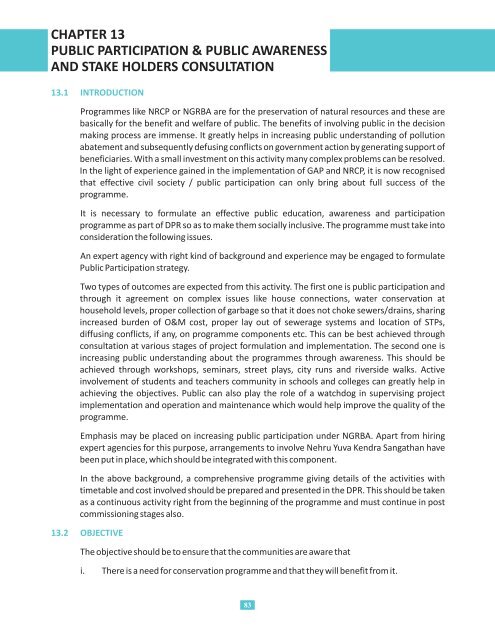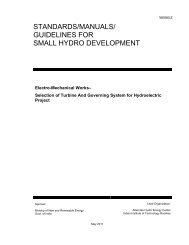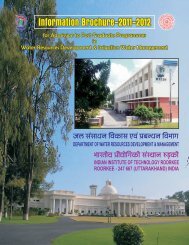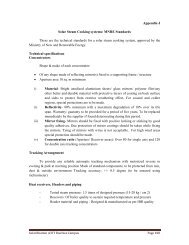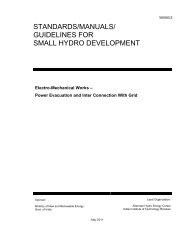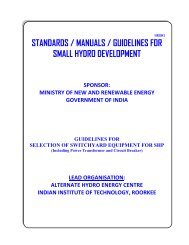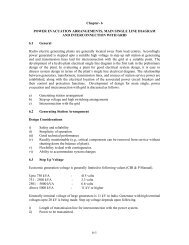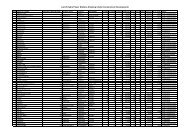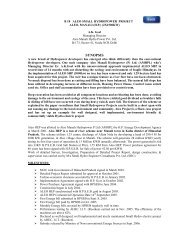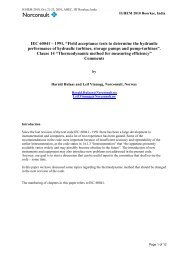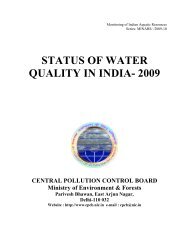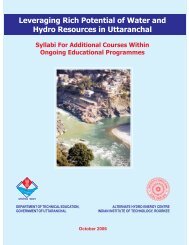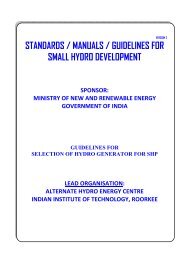annexures - Indian Institute of Technology Roorkee
annexures - Indian Institute of Technology Roorkee
annexures - Indian Institute of Technology Roorkee
Create successful ePaper yourself
Turn your PDF publications into a flip-book with our unique Google optimized e-Paper software.
CHAPTER 13PUBLIC PARTICIPATION & PUBLIC AWARENESSAND STAKE HOLDERS CONSULTATION13.1 INTRODUCTIONProgrammes like NRCP or NGRBA are for the preservation <strong>of</strong> natural resources and these arebasically for the benefit and welfare <strong>of</strong> public. The benefits <strong>of</strong> involving public in the decisionmaking process are immense. It greatly helps in increasing public understanding <strong>of</strong> pollutionabatement and subsequently defusing conflicts on government action by generating support <strong>of</strong>beneficiaries. With a small investment on this activity many complex problems can be resolved.In the light <strong>of</strong> experience gained in the implementation <strong>of</strong> GAP and NRCP, it is now recognisedthat effective civil society / public participation can only bring about full success <strong>of</strong> theprogramme.It is necessary to formulate an effective public education, awareness and participationprogramme as part <strong>of</strong> DPR so as to make them socially inclusive. The programme must take intoconsideration the following issues.An expert agency with right kind <strong>of</strong> background and experience may be engaged to formulatePublic Participation strategy.Two types <strong>of</strong> outcomes are expected from this activity. The first one is public participation andthrough it agreement on complex issues like house connections, water conservation athousehold levels, proper collection <strong>of</strong> garbage so that it does not choke sewers/drains, sharingincreased burden <strong>of</strong> O&M cost, proper lay out <strong>of</strong> sewerage systems and location <strong>of</strong> STPs,diffusing conflicts, if any, on programme components etc. This can be best achieved throughconsultation at various stages <strong>of</strong> project formulation and implementation. The second one isincreasing public understanding about the programmes through awareness. This should beachieved through workshops, seminars, street plays, city runs and riverside walks. Activeinvolvement <strong>of</strong> students and teachers community in schools and colleges can greatly help inachieving the objectives. Public can also play the role <strong>of</strong> a watchdog in supervising projectimplementation and operation and maintenance which would help improve the quality <strong>of</strong> theprogramme.Emphasis may be placed on increasing public participation under NGRBA. Apart from hiringexpert agencies for this purpose, arrangements to involve Nehru Yuva Kendra Sangathan havebeen put in place, which should be integrated with this component.In the above background, a comprehensive programme giving details <strong>of</strong> the activities withtimetable and cost involved should be prepared and presented in the DPR. This should be takenas a continuous activity right from the beginning <strong>of</strong> the programme and must continue in postcommissioning stages also.13.2 OBJECTIVEThe objective should be to ensure that the communities are aware thati. There is a need for conservation programme and that they will benefit from it.83


